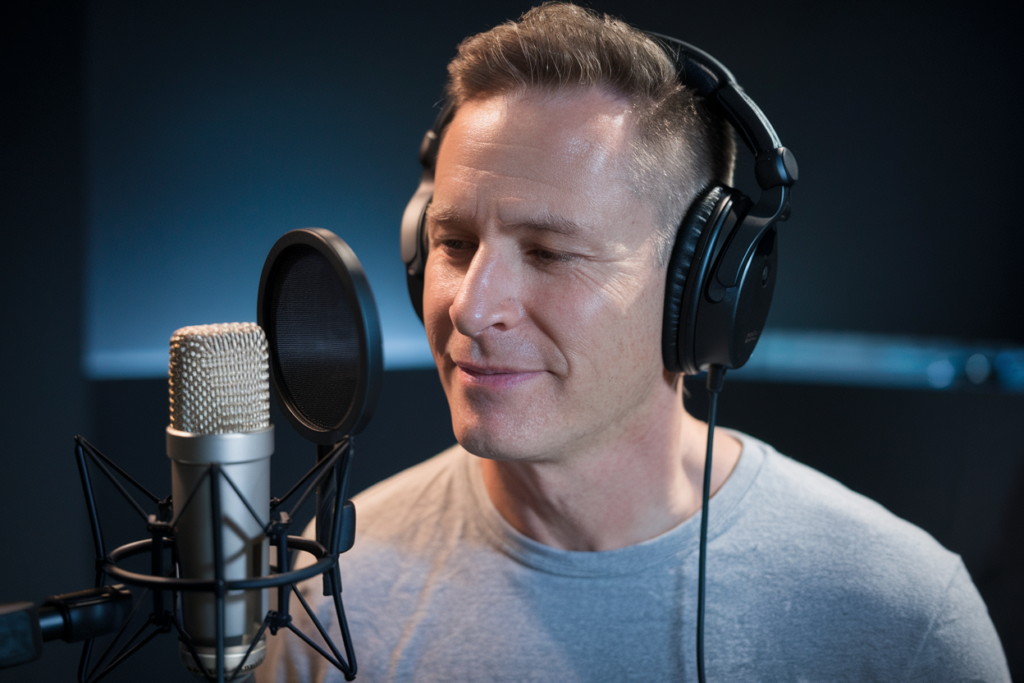Key Takeaways
- Authenticity in Storytelling: Polish dialects enhance the authenticity of characters and narratives in movies and TV shows, allowing for deeper engagement with the material.
- Cultural Identity: Dialects reflect cultural identity and regional pride, capturing unique histories and traditions that standard language may overlook.
- Regional Variations: Poland’s linguistic diversity includes distinct dialects like Silesian, Kashubian, Masurian, and Greater Polish, each contributing unique vocabulary and pronunciation to storytelling.
- Impact on Audience Perception: The use of regional accents by voice actors fosters emotional connections between viewers and characters, making stories more relatable.
- Music Integration: Dialects enrich Polish music by adding authentic local flavors to lyrics, allowing listeners to connect emotionally with themes of heritage and identity.
- Challenges in Representation: Balancing authenticity with accessibility is crucial when portraying dialects; misrepresentation can lead to stereotypes that oversimplify complex cultural identities.
Ever wondered how Polish dialects come alive in movies and TV shows? These unique linguistic flavors not only add authenticity but also shape characters and narratives in fascinating ways. As you dive into the world of Polish media, you’ll discover that these dialects tell stories about culture, identity, and regional pride.
From the charming accents of Kraków to the robust tones of Silesia, each dialect brings its own twist to storytelling. Understanding these nuances can enhance your viewing experience and deepen your appreciation for Polish culture. So let’s explore how these dialects are portrayed in media and what they reveal about the rich tapestry of Poland’s heritage.
Overview of Polish Dialects
Polish dialects showcase the rich linguistic diversity across various regions of Poland. These dialects not only add depth to conversations but also enrich storytelling in media, providing a genuine feel for characters and settings.
Importance of Dialects in Culture
Dialects play a crucial role in expressing cultural identity and regional pride. They capture unique histories, traditions, and nuances that standard language may overlook. When dialects appear in movies or TV shows, they enhance authenticity and create relatable character connections. Viewers often find themselves more engaged when dialogues reflect genuine speech patterns from specific areas.
Regional Variations
Poland features several distinct regional variations of its language, including Silesian, Kashubian, Masurian, and Greater Polish dialects. Each variation carries unique vocabulary and pronunciation:
- Silesian: Spoken predominantly in the Silesia region; it blends Polish with German elements.
- Kashubian: Found along the Baltic Sea; it’s recognized as a separate language with Slavic roots.
- Masurian: Common in the Masuria area; it incorporates influences from both Polish and German languages.
- Greater Polish (Wielkopolski): This variant is prevalent around Poznań; it features distinctive phonetic traits that set it apart.
Understanding these regional variations enhances appreciation for how voice actors portray characters authentically. The use of local dialects elevates performances by adding layers to character development while engaging audiences through familiar sounds.
Polish Dialects in Film
Polish dialects play a crucial role in enhancing the authenticity of movies and TV shows. These distinct regional variations enrich character development and connect audiences to Poland’s cultural heritage.
Representation in Popular Movies
Many popular films incorporate various Polish dialects, showcasing the country’s rich linguistic diversity. For instance, movies set in Silesia often feature Silesian dialects that reflect local traditions and identity. Such representation not only adds depth but also allows viewers to experience the nuances of different regions. Characters might use specific vocabulary or pronunciation that resonates with their backgrounds, making stories more relatable for Polish audiences.
Analysis of Dialect Usage
Analyzing how dialects are used reveals their impact on storytelling. Voice actors who skillfully adopt these regional accents breathe life into characters, creating believable portrayals that resonate with viewers. When a voice artist uses authentic dialects, it enhances dialogue and strengthens emotional connections within scenes. This attention to detail encourages appreciation for both the narrative and its cultural context.
The incorporation of Polish dialects in film offers a unique lens into regional identities while enriching viewer experiences through engaging storytelling techniques.
Polish Dialects in Television
Polish dialects play a significant role in television, enhancing authenticity and character development. These regional variations bring stories to life and allow viewers to connect deeply with the cultural nuances of Poland.
Notable TV Shows Featuring Dialects
Several popular TV shows showcase distinct Polish dialects, providing an authentic backdrop for their narratives. For instance, series set in Silesia frequently incorporate the Silesian dialect, enriching dialogue and giving characters a relatable voice. Other notable examples include programs that feature Kashubian or Masurian accents, which highlight regional identities and traditions. By employing local dialects, these shows not only entertain but also educate audiences about Poland’s diverse linguistic landscape.
Impact on Audience Perception
The use of dialects significantly impacts how audiences perceive characters and stories. When you hear a voice actor skillfully adopting a regional accent, it adds layers of credibility to the portrayal. This attention to detail fosters a connection between viewers and the narrative. Audiences relate more easily to characters who speak with familiar sounds and expressions that mirror their own experiences. Furthermore, when voice talents embody these unique traits through their performances, it creates an emotional resonance that enhances viewer engagement.
Integrating Polish dialects into television deepens storytelling by reflecting cultural identity while engaging viewers on multiple levels. The artistry of skilled voice actors makes this experience even richer as they breathe life into regional voices across various shows.
Music and Polish Dialects
Polish dialects significantly enrich the music landscape, adding unique flavors to lyrics and melodies. These regional variations create an authentic experience for listeners, allowing them to connect emotionally with the songs.
Dialect Influence in Lyrics
Dialect usage in Polish music reflects cultural nuances and local traditions. Artists often incorporate Silesian, Kashubian, or Masurian phrases into their lyrics. This approach not only enhances authenticity but also resonates with audiences familiar with those dialects. For example, a song featuring the Silesian dialect can evoke feelings of nostalgia among listeners from that region. It’s fascinating how specific word choices and pronunciations can transport you back to your roots or spark memories tied to family gatherings or local events.
Cultural Significance in Songs
The cultural significance of using dialects in songs extends beyond mere aesthetics; it celebrates heritage and identity. When artists sing in their native dialects, they pay homage to their communities while sharing stories that might otherwise go unheard. These songs often address themes like love, struggle, and joy through a localized lens, making them relatable on a personal level. Whether it’s a folk tune echoing traditional values or a modern hit reflecting contemporary life experiences, the choice of dialect adds depth to storytelling—much like skilled voice actors who bring characters alive through careful articulation of regional accents.
By embracing these regional linguistic elements within music, artists not only honor their origins but also foster appreciation for Poland’s diverse culture among broader audiences. The rhythm and melody combined with authentic language create an immersive experience that captivates listeners while keeping traditions alive.
Challenges of Representing Dialects
Representing Polish dialects in media presents unique challenges. Accurately conveying regional nuances while maintaining audience accessibility often proves difficult.
Authenticity vs. Accessibility
Authenticity is crucial when representing Polish dialects, as it adds depth and richness to characters and stories. However, achieving this authenticity can create barriers for audiences unfamiliar with specific regional accents or vocabulary. You want your voice actors to deliver authentic performances that resonate emotionally without alienating viewers or listeners who may not grasp the subtle distinctions in dialects. Striking a balance between being true to the culture and ensuring comprehension is essential for effective storytelling.
Stereotypes and Misrepresentation
Stereotyping often arises when depicting dialects in media, leading to oversimplified portrayals that fail to capture the complexity of regional identities. Such misrepresentation risks reinforcing negative stereotypes or reducing rich cultural backgrounds into caricatures. You must ensure that voice actors embody characters with care and respect, accurately reflecting their linguistic heritage rather than relying on shallow assumptions about what a particular accent might convey. Thoughtful representation fosters genuine connections with audiences while celebrating Poland’s diverse cultural landscape.
Conclusion
Polish dialects play an essential role in enriching media by adding authenticity and depth to stories. They connect you to the cultural heritage of Poland while enhancing your experience as a viewer or listener. By showcasing diverse regional variations, these dialects not only portray unique identities but also evoke emotions that resonate with audiences.
As you engage with films music and shows featuring Polish dialects, you’ll find they deepen your understanding of characters and narratives. Embracing this linguistic richness allows for a more immersive experience that celebrates the vibrant tapestry of Polish culture. So next time you watch or listen to something rooted in Polish tradition pay attention to the dialects—they’re a vital part of the story worth appreciating.
Frequently Asked Questions
What is the significance of Polish dialects in media?
Polish dialects enhance authenticity in movies, TV shows, and music by reflecting cultural identity and regional pride. They contribute to character development and storytelling, allowing audiences to connect more deeply with the content.
How do dialects enrich storytelling in films and TV?
Dialects provide a genuine feel for characters and settings, making dialogues relatable and engaging. Skilled voice actors who adopt regional accents create believable portrayals that resonate emotionally with viewers.
Can you name some distinct Polish dialects?
Yes! Notable Polish dialects include Silesian, Kashubian, Masurian, and Greater Polish. Each has unique vocabulary and pronunciation that adds depth to conversations in various media.
How are Polish dialects used in music?
In music, dialects add unique flavors to lyrics and melodies. Artists often incorporate phrases from regional dialects into their songs, enhancing authenticity and resonating with audiences familiar with those sounds.
What challenges arise when representing Polish dialects in media?
Representing Polish dialects can create barriers for audiences unfamiliar with specific accents or vocabulary. There’s also the risk of stereotyping or misrepresenting complex regional identities if not done carefully.







